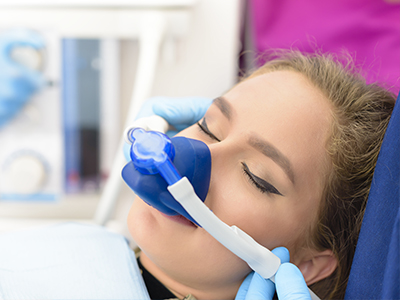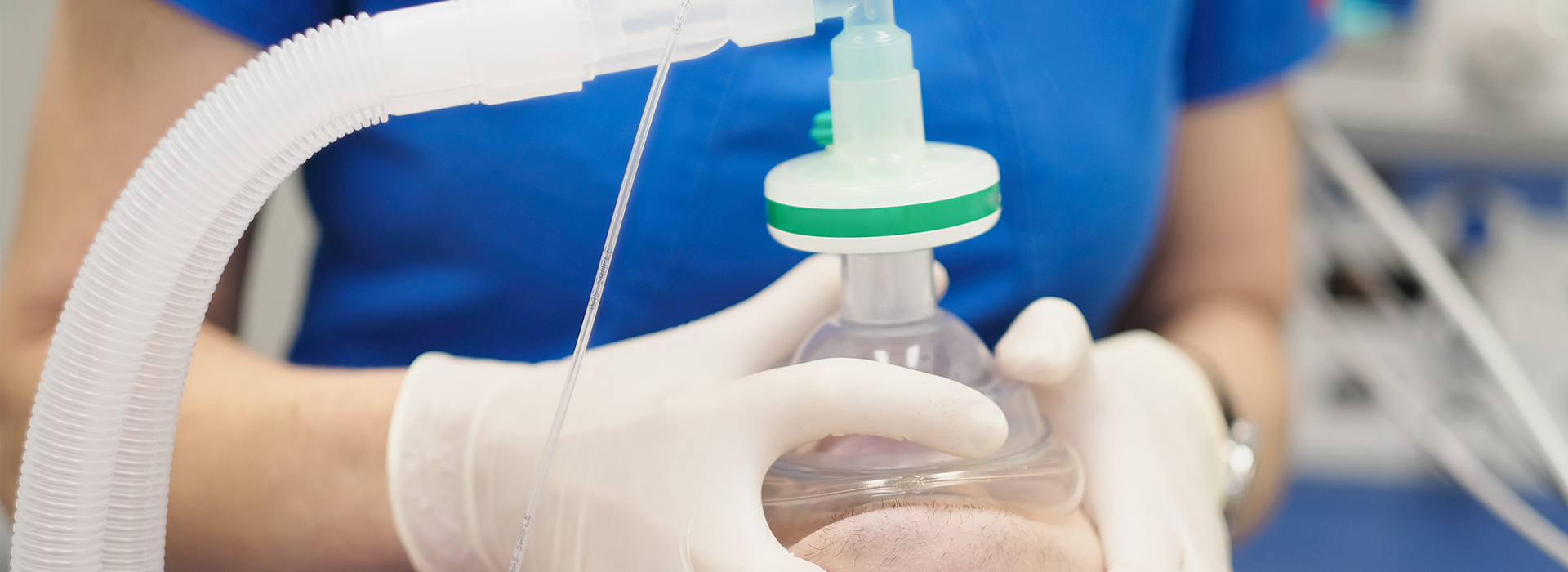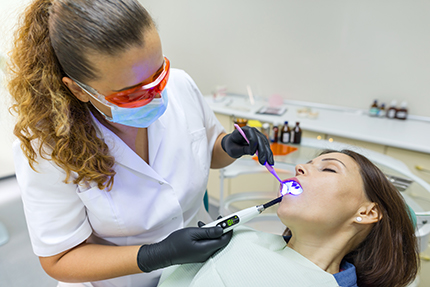North Haven Office

Our Offices
41 Middletown Ave
North Haven, CT 06473
Existing Patients: (203) 234-3900
New Patients: (203) 309-2799
Cromwell Office

Many people feel uneasy at the thought of a dental visit. Whether it’s a persistent nervousness, a vivid memory of an unpleasant appointment, or a profound fear that keeps you from seeking care, dental anxiety is common — and treatable. Our practice understands how apprehension can stand between you and the oral health you deserve. We offer carefully supervised sedation options to make appointments calmer, more efficient, and more comfortable for patients who need extra support.
Sedation dentistry is not about putting patients “to sleep” unnecessarily; it’s about creating a safe, controlled state of relaxation so treatment can proceed without distress. With thoughtful screening, modern monitoring, and personalized planning, sedation can transform the dental experience for patients of all ages. Whether you need a single filling, extensive restorative work, or simply want to remove the stress from routine care, sedation can help you get the treatment you need with dignity and ease.
Sedation dentistry blends clinical techniques and medications to reduce anxiety and increase comfort during dental care. Before any sedative is recommended, your dental team will review your medical history, current medications, and the nature of the procedure to create a plan tailored to your needs. The goal is predictable, safe relaxation that still allows the dental team to provide precise, effective treatment.
In most cases, sedation is used alongside local anesthesia so you won’t experience pain in the treatment area. Sedation affects your perception of the appointment — making time seem shorter and minimizing awareness of sounds, smells, and sensations that can trigger fear. Depending on the method chosen, you may remain fully awake and conversational or drift into a light, dreamlike state while still responding to verbal cues.
Throughout a sedated appointment, clinicians monitor vital signs and comfort closely. Modern protocols emphasize patient safety: dosages are conservative, monitoring equipment is standard, and trained staff oversee recovery. Recovery times vary by method and individual factors, and your team will provide clear instructions about accompaniment, post-appointment rest, and follow-up care so you feel supported every step of the way.

Sedation dentistry is especially helpful for patients whose anxiety prevents regular dental visits or makes treatment intolerable. For someone with dental phobia, a single sedated appointment can break the cycle of avoidance and make it easier to stay on top of preventive care. Removing the emotional barrier often leads to better long-term oral health and fewer emergency problems down the line.
Other situations call for sedation because of practical challenges rather than fear. Patients who must undergo lengthy or complex procedures often prefer sedation so they can remain comfortable through multiple hours of treatment. Sedation can also enable clinicians to accomplish more work in fewer visits, which is beneficial for people who have difficulty finding time for repeated appointments.
There are medical and behavioral reasons to choose sedation as well. A powerful gag reflex, extreme sensitivity in teeth or gums, special needs that make it hard to sit still, or certain medical conditions can all make routine care difficult. Under the right supervision, sedation removes these obstacles and allows clinicians to deliver high-quality treatment with minimal stress for the patient.

Selecting the right sedation approach starts with a thoughtful conversation about your health history, current medications, and comfort goals. Some patients prefer a gentle option that eases nerves for routine care, while others require a deeper level of relaxation for more involved procedures. A customized recommendation balances effectiveness with safety and convenience so you can undergo treatment with confidence.
Beyond the clinical factors, practical considerations matter: how long the procedure will take, whether you need to return to work the same day, and whether you have someone who can accompany you home if required. Your dental team will explain the pros and cons of each approach and guide you to the option that best aligns with your situation and the clinical plan.
No matter which method is recommended, monitoring and recovery protocols are in place to protect your well-being. Staff are trained to observe vital signs, manage medications responsibly, and support a smooth emergence from sedation so you leave the office feeling safe and taken care of.
Not all sedation is the same. Conscious sedation is designed to relax you while maintaining breathing and protective reflexes; you may be groggy or drowsy, but you can be awakened and respond to instructions. This level of sedation is commonly used in dental offices and supports safe, efficient care for many procedures.
Deep anesthesia — often called general anesthesia — produces a medically induced sleep in which the patient is not easily roused and requires professional airway management. General anesthesia is typically administered in a hospital or specialized setting and is reserved for cases where conscious sedation cannot provide adequate comfort or safety. For most dental needs, office-based conscious sedation is sufficient and far more practical.
Your provider will explain why a particular level of sedation is recommended and where it will be administered. The primary aim is to match the intensity of sedation to the clinical requirements and the patient’s overall health so that the experience is both comfortable and safe.
When conscious sedation is appropriate, there are several common methods used in the dental office. Each option offers a different balance of onset, depth, and recovery time, and the choice depends on the patient’s needs and the planned procedure. All are administered by trained clinicians who follow strict monitoring protocols.
Nitrous oxide, often called “laughing gas,” is a mild sedative inhaled through a small mask. It reduces anxiety quickly, is easy to control, and wears off almost immediately once the flow is stopped. Because it works rapidly and recovery is swift, nitrous oxide is a popular choice for patients with mild to moderate anxiety or those who need short-term relief from a strong gag reflex.
Oral sedation involves taking a prescribed medication before the appointment so that a calming effect is present by the time treatment begins. This approach can produce moderate drowsiness and a reduced memory of the appointment, which many patients find reassuring. Because drowsiness persists after the visit, arrangements must be made for someone to accompany and drive the patient home.
IV sedation delivers medication directly into the bloodstream and is used when a higher level of sedation is required. It acts quickly and can be adjusted during the procedure to maintain the desired level of calm. IV sedation requires fasting beforehand and a responsible escort afterward, and it is provided by clinicians trained to monitor sedation closely.
Preparation helps ensure a smooth, uneventful sedation experience. Your provider will outline instructions such as whether to fast, which medications to continue or temporarily pause, and what paperwork or medical information to bring. Be honest about your medical history and any supplements or over-the-counter drugs you take — full disclosure allows clinicians to choose the safest, most effective plan for you.
On the day of the appointment, expect attentive monitoring from staff who will track breathing, oxygenation, and cardiovascular signs as needed. After treatment, recovery areas allow patients to rest until they are alert and stable. For some types of sedation you will need someone to drive you home and remain with you for a short time; for lighter methods, same-day activities may be possible once the team confirms you are ready.
Follow-up care is straightforward: avoid strenuous activity for the remainder of the day, follow any medication instructions, and contact the office if you have concerns such as prolonged drowsiness, unexpected pain, or other issues. With clear pre- and post-procedure guidance, sedation is a reliable option to make dental care accessible and comfortable.
At our office, we approach sedation dentistry with thoughtful planning and respect for each patient’s comfort and safety. Nova Dental’s team will answer your questions, outline the recommended approach, and support you before, during, and after treatment. If dental anxiety or medical circumstances have kept you from getting the care you need, sedation can remove that barrier so you can maintain a healthy, confident smile.
Contact us to learn more about how sedation dentistry might fit your needs and to schedule a consultation to discuss options in a calm, confidential setting.
Sedation dentistry offers patients with general anxiety or fears about a dental procedure the opportunity to have a more comfortable and stress-free experience. By utilizing safe and controlled sedation techniques, the patient is eased into a state of complete relaxation before the procedure. This approach eliminates discomfort, pain, and preoperative anxiety, and typically makes patients feel more at ease post-operatively, as they have little or no memory of the actual moment-to-moment procedure.
Local anesthesia involves an injection directly into or close to the area where a procedure is being performed. While it eliminates any sensation of pain in the targeted area, it does not affect your state of mind or level of anxiety. When a patient receives sedation, additional medications to ease anxiety and promote relaxation are employed in advance of local anesthesia. In this way, both the stress and discomfort associated with a procedure are eliminated. Sedation can be administered in a variety of forms based upon patient needs and the recommendations of the dentist or dental anesthesiologist.
Choosing the most appropriate method of sedation for a procedure depends on a variety of factors such as a patient's medical history and their level of anxiety. Dental sedation can come in the form of nitrous oxide sedation, oral conscious sedation, and IV sedation. Certain patients receiving comprehensive treatment or undergoing a complex surgical procedure may require general anesthesia in a hospital setting.
Nitrous oxide, or "laughing gas," is a mild sedative, which is inhaled through a small mask over the nose. A standard in dental sedation for decades, the effects of nitrous oxide are almost immediate and wear off quickly once your procedure is completed.
Oral sedation involves the prescription of an oral medication prior to your appointment. Taken at the recommended time before your visit, oral sedation allows you to feel fully relaxed by the time you're ready for your procedure. With oral sedation, it's necessary to plan on having an escort to and from your dentist's office.
IV Sedation is administered intravenously, or directly into a vein. It is typically indicated when a deeper state of sedation is required. Your dentist will provide you with specific instructions before your visit, and require that you have an escort for the trip home from your appointment.
Sedation dentistry uses medications and clinical techniques to reduce anxiety and increase comfort during dental treatment. The goal is a controlled state of relaxation so the dental team can perform procedures safely and efficiently while the patient remains calm. Sedation may change your perception of time and lessen awareness of sounds, smells and sensations that often trigger fear.
Sedation is usually paired with local anesthesia so the treatment area is numb and pain is controlled. Clinicians select an appropriate agent and dose based on your health history and the planned procedure, and they continuously monitor vital signs throughout the appointment. Recovery instructions and follow-up care are provided to ensure you leave the office safely.
Good candidates include patients whose anxiety or fear prevents timely dental care, people who have difficulty tolerating long procedures, and individuals with a strong gag reflex or extreme dental sensitivity. Patients with certain medical or behavioral needs that make it hard to sit still may also benefit from a sedated approach. Each candidate is evaluated individually to determine whether sedation will safely improve their experience.
Evaluation includes a review of medical history, current medications, allergies and any previous reactions to sedatives or anesthesia. The dental team may coordinate with your primary care physician or a specialist when there are complex medical issues. Informed consent and a clear plan help align expectations and reduce risk.
Common office-based methods include inhalation sedation with nitrous oxide, oral sedation using prescribed medication, and intravenous (IV) sedation for deeper control. Nitrous oxide produces mild relaxation with rapid onset and quick recovery, making it useful for routine visits or mild to moderate anxiety. Oral medications create moderate drowsiness and often reduce memory of the appointment, while IV sedation acts quickly and can be adjusted in real time for procedures that require a higher level of calm.
Each method differs in onset, depth and recovery time, so the choice depends on the procedure length, your medical profile and your personal comfort goals. The dental team will explain the pros and cons of each option and recommend the safest, most effective approach for your situation. Proper monitoring and recovery protocols are in place for all methods used in the office.
Preparation typically includes following fasting instructions when required, reviewing which medications to continue or pause, and bringing a complete list of medical conditions and prescription or over-the-counter drugs. Honesty about supplements, sleep aids or herbal remedies is important because these can interact with sedatives. For moderate to deep sedation, you will need a responsible adult to drive you home and remain with you for a short period after the appointment.
On the day of treatment, arrive wearing comfortable clothing and avoid alcohol or recreational drugs beforehand. The office will provide specific arrival times and pre-procedure instructions to ensure monitoring equipment and recovery space are ready. Adhering to the guidelines helps reduce complications and supports a smooth experience.
After the procedure you will be monitored until your vital signs are stable and your level of alertness meets safety criteria for discharge. Drowsiness and mild grogginess are common, especially after oral or IV sedation, and recovery times vary between patients. The team will advise when it is safe to eat, take routine medications and resume normal activities.
For deeper levels of sedation you will need someone to drive you home and stay with you for a period of observation. Avoid strenuous activity for the remainder of the day and follow any written post-procedure instructions provided by the dental team. Contact the office promptly if you experience prolonged drowsiness, unexpected pain or other concerns.
Sedation dentistry is safe when administered by trained professionals who follow established protocols for screening, dosing and monitoring. The dental team assesses health status, medication interactions and anesthesia risk before recommending sedation, and they use continuous monitoring during the appointment to track breathing, oxygenation and heart rate as appropriate. Conservative dosing and careful titration help maintain a predictable level of relaxation while protecting patient safety.
Staff are prepared to respond to medical emergencies and maintain equipment and training that support safe outcomes. Clear preoperative instructions and honest communication about health history reduce risks. Ongoing follow-up after the appointment ensures recovery proceeds as expected.
Sedation reduces the anxiety response that fuels dental phobia, making it possible for patients to undergo necessary exams and treatments without overwhelming fear. By calming the sympathetic nervous system and altering perception, sedation can make time feel shorter and reduce the emotional intensity of the appointment. This often helps break a cycle of avoidance and leads to better long-term oral health by making routine care attainable.
For patients with a strong gag reflex, specific techniques and lighter sedative options such as nitrous oxide can decrease sensitivity and improve tolerance of instruments. When appropriate, topical anesthetics, behavioral strategies and positioning adjustments are combined with sedation to minimize discomfort. The result is a more controlled, effective visit that allows clinicians to deliver quality care.
Children and patients with special needs can be candidates for office-based sedation when an individualized evaluation supports safety and effectiveness. Pediatric dosing, developmental considerations and parental or guardian consent are all part of the planning process, and the dental team will tailor the approach to age and medical complexity. Some children do very well with nitrous oxide, while others may require different strategies depending on behavior and treatment needs.
For patients with special needs, sedation can enable comprehensive care that would otherwise be difficult or impossible, but it requires close coordination with caregivers and, when necessary, the patient’s medical providers. The practice will document a clear plan for monitoring, recovery and post-visit support to ensure each appointment proceeds safely. Ongoing communication and follow-up help maintain comfort and trust.
Memory and awareness depend on the type and depth of sedation used: nitrous oxide generally preserves awareness with minimal memory changes, while oral or IV medications can produce partial amnesia and a reduced recollection of events. Patients sedated with deeper levels may have little to no memory of the procedure, which many find reassuring for anxiety relief. Your provider will explain what level of recall to expect based on the chosen method.
Regardless of memory effects, conscious sedation is designed so you can be awakened and respond to verbal cues if needed, while deeper techniques require more intensive monitoring and a recovery period. Discuss any concerns about awareness or recall during the consultation so the team can match your comfort goals to an appropriate plan. Clear instructions about accompaniment and post-procedure care are provided when memory effects are anticipated.
Begin by preparing a detailed list of your medical history, current medications, previous anesthesia experiences and specific fears or concerns you want the team to know. Describe the kinds of procedures you anticipate and any logistical constraints such as time off work or who can accompany you after the visit. These details help the dentist recommend a method that balances comfort, safety and practical needs.
Bring up your questions about onset, recovery, monitoring and any preparation required so you leave the consultation with a clear plan. The Nova Dental team at our North Haven and Cromwell offices will review options, explain risks and benefits, and collaborate with you to schedule a safe, individualized appointment. A thoughtful conversation ensures your care is comfortable and aligned with your oral health goals.
